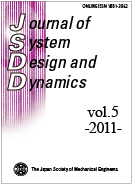5 巻, 7 号
選択された号の論文の11件中1~11を表示しています
- |<
- <
- 1
- >
- >|
Papers
-
2011 年5 巻7 号 p. 1402-1417
発行日: 2011年
公開日: 2011/11/30
PDF形式でダウンロード (2986K) -
2011 年5 巻7 号 p. 1418-1432
発行日: 2011年
公開日: 2011/11/30
PDF形式でダウンロード (1934K) -
2011 年5 巻7 号 p. 1433-1443
発行日: 2011年
公開日: 2011/11/30
PDF形式でダウンロード (1946K) -
2011 年5 巻7 号 p. 1444-1459
発行日: 2011年
公開日: 2011/11/30
PDF形式でダウンロード (2657K) -
2011 年5 巻7 号 p. 1460-1470
発行日: 2011年
公開日: 2011/11/30
PDF形式でダウンロード (427K) -
2011 年5 巻7 号 p. 1471-1484
発行日: 2011年
公開日: 2011/11/30
PDF形式でダウンロード (1350K) -
2011 年5 巻7 号 p. 1485-1497
発行日: 2011年
公開日: 2011/11/30
PDF形式でダウンロード (869K) -
2011 年5 巻7 号 p. 1498-1507
発行日: 2011年
公開日: 2011/11/30
PDF形式でダウンロード (401K) -
2011 年5 巻7 号 p. 1508-1517
発行日: 2011年
公開日: 2011/11/30
PDF形式でダウンロード (520K) -
2011 年5 巻7 号 p. 1518-1530
発行日: 2011年
公開日: 2011/11/30
PDF形式でダウンロード (750K) -
2011 年5 巻7 号 p. 1531-1544
発行日: 2011年
公開日: 2011/11/30
PDF形式でダウンロード (1092K)
- |<
- <
- 1
- >
- >|
